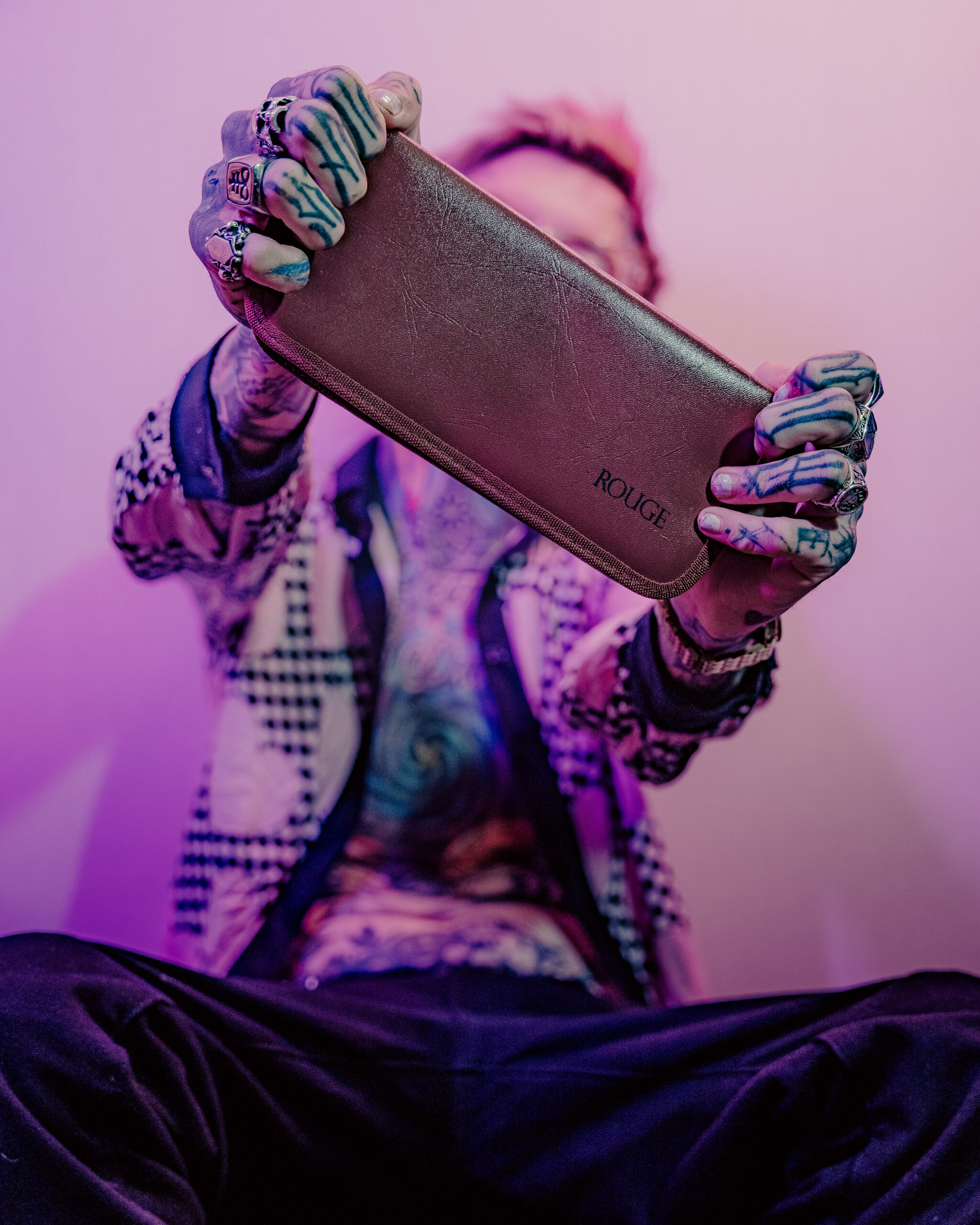Understanding Bi-Gender Identity
Understanding bi-gender identity requires exploring a spectrum of gender experiences that fall outside the traditional binary of male and female. Individuals who identify as bi-gender often experience their gender as fluid, fluctuating between or encompassing both masculine and feminine traits. This identity is distinct from transgender identities, which typically involve a persistent identification with a gender different from the one assigned at birth.
Definition and Core Concepts
Bi-gender individuals may express themselves in ways that blend both masculine and feminine characteristics. Some might identify as bi-gender on a continuum, feeling more aligned with one gender at certain times and another at different points in their lives. Others may feel equally connected to both genders simultaneously.
It’s important to note that bi-gender is a personal and unique experience. There is no single “right” way to be bi-gender, and expressions of this identity can vary greatly from person to person.
Bi-gender identities are often associated with a sense of fluidity and self-discovery. Individuals may explore different gender expressions and roles throughout their lives as they better understand their own identity.
Distinguishing Bi-Gender from Other Identities
Understanding bi-gender identity requires exploring a spectrum of gender experiences that fall outside the traditional binary of male and female. Individuals who identify as bi-gender often experience their gender as fluid, fluctuating between or encompassing both masculine and feminine traits. This identity is distinct from transgender identities, which typically involve a persistent identification with a gender different from the one assigned at birth.
Bi-gender individuals may express themselves in ways that blend both masculine and feminine characteristics. Some might identify as bi-gender on a continuum, feeling more aligned with one gender at certain times and another at different points in their lives. Others may feel equally connected to both genders simultaneously.
It’s important to note that bi-gender is a personal and unique experience. There is no single “right” way to be bi-gender, and expressions of this identity can vary greatly from person to person.
Bi-gender identities are often associated with a sense of fluidity and self-discovery. Individuals may explore different gender expressions and roles throughout their lives as they better understand their own identity.
Experiences of Bi-Gender Individuals
Understanding bi-gender identity requires exploring a spectrum of gender experiences that fall outside the traditional binary of male and female. Individuals who identify as bi-gender often experience their gender as fluid, fluctuating between or encompassing both masculine and feminine traits. This identity is distinct from transgender identities, which typically involve a persistent identification with a gender different from the one assigned at birth.
Bi-gender individuals may express themselves in ways that blend both masculine and feminine characteristics. Some might identify as bi-gender on a continuum, feeling more aligned with one gender at certain times and another at different points in their lives. Others may feel equally connected to both genders simultaneously.
It’s important to note that bi-gender is a personal and unique experience. There is no single “right” way to be bi-gender, and expressions of this identity can vary greatly from person to person.
Bi-gender identities are often associated with a sense of fluidity and self-discovery. Individuals may explore different gender expressions and roles throughout their lives as they better understand their own identity.
- Some bi-gender individuals identify as such for the entirety of their life, while others may use this term at certain points in their journey of self-discovery.
- The experiences and expressions of bi-gender individuals can be diverse and multifaceted.
- Respectful language and understanding are crucial when interacting with bi-gender individuals. It’s important to use the pronouns they identify with and avoid making assumptions about their gender expression or identity.
Expression and Presentation
Understanding bi-gender identity requires exploring a spectrum of gender experiences that fall outside the traditional binary of male and female. Individuals who identify as bi-gender often experience their gender as fluid, fluctuating between or encompassing both masculine and feminine traits. This identity is distinct from transgender identities, which typically involve a persistent identification with a gender different from the one assigned at birth.
Bi-gender individuals may express themselves in ways that blend both masculine and feminine characteristics. Some might identify as bi-gender on a continuum, feeling more aligned with one gender at certain times and another at different points in their lives. Others may feel equally connected to both genders simultaneously.
It’s important to note that bi-gender is a personal and unique experience. There is no single “right” way to be bi-gender, and expressions of this identity can vary greatly from person to person.
Bi-gender identities are often associated with a sense of fluidity and self-discovery. Individuals may explore different gender expressions and roles throughout their lives as they better understand their own identity.
- Some bi-gender individuals identify as such for the entirety of their life, while others may use this term at certain points in their journey of self-discovery.
- The experiences and expressions of bi-gender individuals can be diverse and multifaceted.
- Respectful language and understanding are crucial when interacting with bi-gender individuals. It’s important to use the pronouns they identify with and avoid making assumptions about their gender expression or identity.
Social and Cultural Perceptions
Bi-gender is an umbrella term encompassing a range of experiences where someone feels a connection to both masculine and feminine genders.
Social and cultural perceptions of bi-gender identity vary widely. In some cultures, there may be acceptance and understanding of gender fluidity, while in others, it might be met with stigma or misunderstanding.
Media representation often plays a role in shaping these perceptions. Positive and accurate portrayals can contribute to greater awareness and acceptance, while stereotypes and misrepresentations can reinforce harmful biases.
It’s crucial to approach discussions about gender identity with sensitivity and respect. Avoiding generalizations and respecting individual preferences for language and pronouns is essential.
Promoting education and open dialogue can help create a more inclusive society where bi-gender individuals feel comfortable expressing themselves authentically.
Navigating Gender in Daily Life
Bi-gender is an umbrella term encompassing a range of experiences where someone feels a connection to both masculine and feminine genders.
Social and cultural perceptions of bi-gender identity vary widely. In some cultures, there may be acceptance and understanding of gender fluidity, while in others, it might be met with stigma or misunderstanding.
Media representation often plays a role in shaping these perceptions. Positive and accurate portrayals can contribute to greater awareness and acceptance, while stereotypes and misrepresentations can reinforce harmful biases.
It’s crucial to approach discussions about gender identity with sensitivity and respect. Avoiding generalizations and respecting individual preferences for language and pronouns is essential.
Promoting education and open dialogue can help create a more inclusive society where bi-gender individuals feel comfortable expressing themselves authentically.

Pronouns and Naming Preferences
Navigating gender in daily life can be complex, especially when considering identities that fall outside the traditional binary of male and female. Pronouns are a crucial aspect of this navigation, as they directly reflect an individual’s gender identity. Using someone’s correct pronouns is essential for showing respect and acknowledging their self-expression.
Individuals who identify as bi-gender may use different pronouns at different times or prefer a combination of pronouns. It’s important to remember that there’s no single “right” way to be bi-gender, and each person’s experience is unique.

When interacting with someone whose gender identity you are unsure of, it’s always best to ask respectfully what pronouns they use.
For example, you could say, “What pronouns do you use?” or “Could you tell me your preferred pronouns?” This shows that you are willing to learn and respect their identity.
Additionally, being mindful of language and avoiding gendered assumptions is important. For instance, instead of using phrases like “he or she,” consider using gender-neutral terms such as “they” or “them.”
Remember that creating a more inclusive environment involves ongoing learning and effort. By actively listening, asking questions, and using respectful language, we can create a space where everyone feels seen and affirmed.
Relationships and Social Interactions
Navigating gender in daily life can be complex, especially when considering identities that fall outside the traditional binary of male and female. Pronouns are a crucial aspect of this navigation, as they directly reflect an individual’s gender identity. Using someone’s correct pronouns is essential for showing respect and acknowledging their self-expression.
Individuals who identify as bi-gender may use different pronouns at different times or prefer a combination of pronouns. It’s important to remember that there’s no single “right” way to be bi-gender, and each person’s experience is unique.

When interacting with someone whose gender identity you are unsure of, it’s always best to ask respectfully what pronouns they use.
For example, you could say, “What pronouns do you use?” or “Could you tell me your preferred pronouns?” This shows that you are willing to learn and respect their identity.
Additionally, being mindful of language and avoiding gendered assumptions is important. For instance, instead of using phrases like “he or she,” consider using gender-neutral terms such as “they” or “them.”
Remember that creating a more inclusive environment involves ongoing learning and effort. By actively listening, asking questions, and using respectful language, we can create a space where everyone feels seen and affirmed.
Challenges and Support Systems
Navigating gender in daily life can be complex, especially for those whose identities fall outside traditional binaries. Bi-gender individuals, who experience their gender as encompassing both masculine and feminine traits, may face unique challenges.
One significant challenge is finding accurate and respectful representation in media and society. Lack of visibility can lead to feelings of isolation and difficulty understanding one’s own identity.
Another challenge is encountering prejudice and discrimination based on gender non-conformity. Bi-gender individuals may face microaggressions, harassment, or even violence due to societal misconceptions about gender.
Building a support system is crucial for navigating these challenges. Connecting with other bi-gender individuals, whether through online communities or local support groups, can provide validation, shared experiences, and a sense of belonging.
Seeking out allies—friends, family members, or professionals—who are understanding and supportive can also make a significant difference.
Advocacy organizations dedicated to LGBTQ+ rights often offer resources and guidance for bi-gender individuals, providing information about legal protections, mental health services, and community events.
Ultimately, creating a more inclusive society where all genders are respected and valued requires ongoing dialogue, education, and a commitment to dismantling harmful stereotypes.
Bi-Gender Representation and Advocacy
Bi-gender representation and advocacy are crucial for creating a more inclusive society that embraces the diverse spectrum of gender identities. Understanding bi-gender experiences and challenges allows us to promote empathy, respect, and support for individuals who identify as bi-gender.
Visibility and Media Portrayals
Bi-gender representation in media is often lacking and frequently relies on stereotypes. This lack of visibility can contribute to feelings of isolation and misunderstanding among bi-gender individuals. Positive and accurate portrayals in film, television, literature, and other media are essential for raising awareness, challenging misconceptions, and fostering a greater sense of acceptance.
Advocacy groups play a vital role in promoting bi-gender rights and visibility. They work to educate the public about bi-gender identities, advocate for legal protections, and provide support services to individuals who identify as bi-gender.
Bi-gender individuals may face unique challenges when it comes to accessing healthcare. Some healthcare providers may lack understanding of bi-gender identities or be ill-equipped to provide sensitive and affirming care. It is important for healthcare professionals to receive training on gender identity and diversity to ensure they can meet the needs of all patients, regardless of their gender expression or identity.
Creating a more inclusive environment requires ongoing education and dialogue. Engaging in respectful conversations about gender identity, challenging stereotypes, and promoting understanding can help create a society where bi-gender individuals feel seen, valued, and supported.
Community Building and Resources
Bi-gender representation and advocacy are essential for creating a society that embraces the full spectrum of human experience. Understanding bi-gender identities goes beyond simply recognizing them as valid; it involves actively dismantling harmful stereotypes, promoting accurate information, and fostering a culture of inclusivity where bi-gender individuals feel safe and empowered to express themselves authentically.
Community building is crucial for bi-gender individuals, providing a space for shared experiences, support, and validation. Online communities, support groups, and social events can connect people with similar experiences, offering a sense of belonging and reducing feelings of isolation.
Resources such as online forums, educational materials, and advocacy organizations can provide valuable information, legal guidance, and emotional support for bi-gender individuals and their allies.
It’s important to remember that language matters when discussing gender identity. Using respectful and accurate terms, such as “bi-gender” instead of outdated or offensive labels, demonstrates respect and understanding.
Promoting Understanding and Acceptance
Bi-gender representation and advocacy are crucial for creating a society that embraces the full spectrum of human experience. Understanding bi-gender identities goes beyond simply recognizing them as valid; it involves actively dismantling harmful stereotypes, promoting accurate information, and fostering a culture of inclusivity where bi-gender individuals feel safe and empowered to express themselves authentically.
Bi-gender representation in media is often lacking and frequently relies on stereotypes. This lack of visibility can contribute to feelings of isolation and misunderstanding among bi-gender individuals. Positive and accurate portrayals in film, television, literature, and other media are essential for raising awareness, challenging misconceptions, and fostering a greater sense of acceptance.
Advocacy groups play a vital role in promoting bi-gender rights and visibility. They work to educate the public about bi-gender identities, advocate for legal protections, and provide support services to individuals who identify as bi-gender.
Bi-gender individuals may face unique challenges when it comes to accessing healthcare. Some healthcare providers may lack understanding of bi-gender identities or be ill-equipped to provide sensitive and affirming care. It is important for healthcare professionals to receive training on gender identity and diversity to ensure they can meet the needs of all patients, regardless of their gender expression or identity.
Community building is crucial for bi-gender individuals, providing a space for shared experiences, support, and validation. Online communities, support groups, and social events can connect people with similar experiences, offering a sense of belonging and reducing feelings of isolation. Resources such as online forums, educational materials, and advocacy organizations can provide valuable information, legal guidance, and emotional support for bi-gender individuals and their allies.
It’s important to remember that language matters when discussing gender identity. Using respectful and accurate terms, such as “bi-gender” instead of outdated or offensive labels, demonstrates respect and understanding. Creating a more inclusive environment requires ongoing education and dialogue. Engaging in respectful conversations about gender identity, challenging stereotypes, and promoting understanding can help create a society where bi-gender individuals feel seen, valued, and supported.
fake vagina
Dr Nerina Muses
Stand Seven
- Ghostlighting: A Toxic Mix Of Ghosting And Gaslighting In Dating - May 10, 2025
- Cannabis Drinks And Their Growing Appeal To Non-Smokers - May 9, 2025
- New Patient Treatment Near Woldingham, Surrey - May 9, 2025
